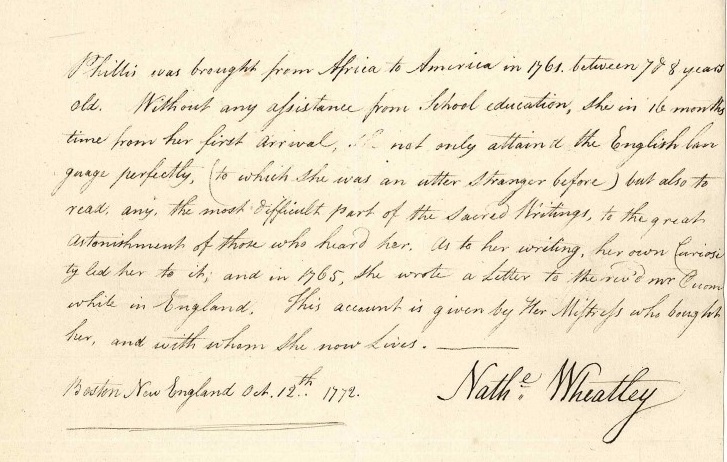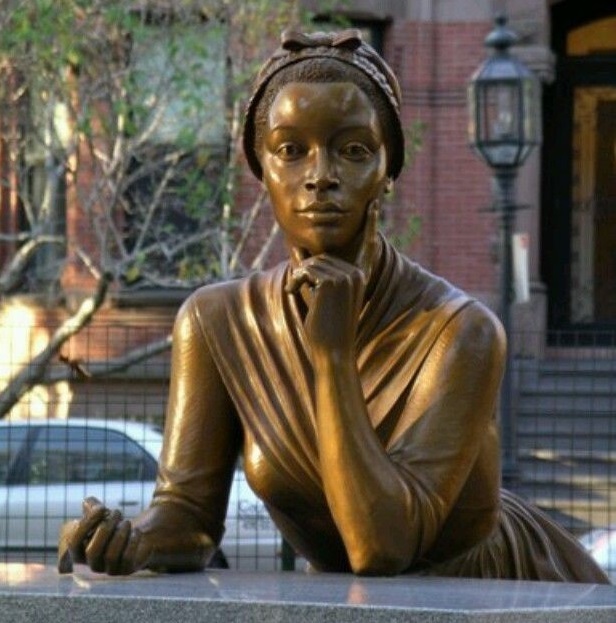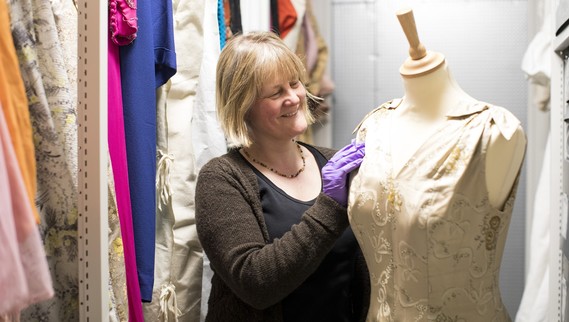|
The Archives and Heritage Service have been part of a successful follow up project to ‘Flood and Drought’ with Liverpool University. It is called 'Building Climate Resilience through Community, Culture and Understanding' and is funded by the Arts and Humanities Research Council (AHRC) and runs from 1 August for 24 months.
The outreach work will begin with a series of talks across Staffordshire, the aim is to gain ‘an understanding of Staffordshire life in relation to climate change, adaption and resilience’ Oral history interviews will be carried out and there is £8,000 for a touring exhibition to follow on from that. The project will link this research with work carried out in the Outer Hebrides and the Eden catchment area. The local lead (Post Doctoral) will be Alice Harvey-Fishenden, who worked with us previously as ‘Drought’ on the ‘Flood and Drought’ project.
 SRO D(W)1778/Iii/835/3
Finding Phillis
Recently, whilst doing work connected with the Earl of Dartmouth’s collection (Staffordshire Record Office D(W)1778), Ben, one of the Archive Assistants, came across a letter and a poem addressed to the Earl, dated October 1772. The author was Phillis Wheatley of Boston, Massachusetts. This seemed a little unusual as the majority of the Earl’s correspondents were men writing in an official capacity or the occasional lady from the landowning classes.
A covering letter included with Phillis’s poem, was signed ‘Nathaniel Wheatley’ (also of Boston) and explained that Phillis was an African-born slave who displayed an amazing talent for poetry. The name Phillis Wheatley had sounded vaguely familiar to Ben, who remembered seeing a display about the remarkable story of a local woman, a former slave, who became the first published African American poet in history during a trip to Boston a few years ago. Ben was fairly sure that this was the same Phillis Wheatley whose letter he now held. Thanks to the boundless resources of the internet, he was able to establish that his suspicions were correct, and that Staffordshire’s archives hold a letter and poem written and signed by Phillis herself.
The question remained – why would we hold a Phillis Wheatley poem in the first place? Further research revealed the intriguing story of the letters and the remarkable woman behind them.
The first biographical clues are contained in the covering letter signed by Nathaniel Wheatley, who was the son the slave owner John Wheatley.
It is believed that Phillis was born in 1753 in West Africa, possibly in Senegal or Gambia. We do not know her birth name but aged no older than 8 years, she was kidnapped or sold by a local chief to a slave trader, who took her to Boston on a ship called The Phillis. Here she was sold to wealthy merchant John Wheatley as a servant for his wife, Susanna. The couple named the child after the ship that had brought her from Africa, also giving her their surname, a common custom at the time.
Phillis was said to be ‘a timid child’ and she was tutored by Wheatley’s older children, Mary and Nathaniel. By the age of 12 Phillis could read Greek and Latin. Two years later, aged 14, Phillis wrote her first poem. The Wheatleys supported her ongoing education, even relieving her of most domestic duties (which were left to other enslaved workers in the household). However, the Wheatleys also used Phillis’s talents to show off in front of friends and family, suggesting that she may have been treated as something of an entertaining novelty in their social circles.
Phillis’s first poem, about two men almost drowned at sea and the saved by the strength of their faith, was published in 1767 in The Newport Mercury. She then wrote an elegy for George Whitefield, an evangelist, and her reputation began to spread. Soon Phillis was receiving visits from notable Boston citizens, including poets and politicians. She wrote poems dedicated to a number of public figures, including one dating from 1768 addressed to George III praising him for repealing the Stamp Act.
However, not all Bostonians were convinced that an African-born slave could possibly write such poetry. In 1772 John Wheatley defended Phillis’s abilities in court and she was examined by a group of local luminaries, including the governor and lieutenant governor of Massachusetts. The group agreed that Phillis was indeed the author of her poems and provided a signed attestation to publicly state the fact.
That same year, Phillis would address a poem to the Earl of Dartmouth – and that is where our link comes in. William Legge, 2nd Earl of Dartmouth (1731-1801) became Secretary of State for the Colonies between 1772 and 1775, and it was his arrival in the Colonies in 1772 that was the inspiration for Phillis to pen her poem.
The Earl was obviously impressed with young Phillis’s talents, as not only did he preserve the poem in his family papers (which, as the family seat was at Sandwell, now reside at Staffordshire Record Office as the repository for the historic county), he became one of her patrons. Today a little bit of Phillis’s legacy has found its home here in Staffordshire’s archives collections. Read the full article by visiting The Learning Room blog at https://shcvolunteers.wordpress.com/2020/08/17/finding-phillis/
 Statue commemorating Phillis in Boston
 This week we meet another member of the Museum Team, Helen Johnson. Helen's role as Museum Development Officer.
What does your role involve?
As an MDO I am lucky to be able to work with museums across Staffordshire and the wider West Midlands region, advising and supporting them with collections care, audience development, funding, strategic planning and governance. Roughly half my time is spent working in partnership with the West Midlands Museum Development team who are based at Ironbridge Gorge Museum. The rest of my work focuses on supporting the Archives and Heritage Service; developing exhibitions, projects and activities to engage our audiences across the county in partnership with the Staffordshire Library service, other museums and community groups, supporting our volunteers and working with the collections in the stores.
When did you start working with the Archives and Heritage Service?
I started in 1998 as Assistant Museum Officer working on the documentation, interpretation and care of the collections at the County Museum. In 2003 the role changed to Museum Development Officer.
What made you choose this career?
I have always been interested in history and the stories connected with people and places. Working in museums seemed to be the logical and enjoyable way to take this forward as a career. Working with historic objects is a real privilege, there is always something to discover and learn about them.
What is your favourite object or document or photograph from the collection?
That is always a very difficult question because the answer always seem to change. My main interest is the historic dress and textile collection and there really are too many 'favourites' to chose from. If pushed I would probably have to say an embroidered silk gown from the late 18th century which is exquisite.
What is your most memorable moment about working for the Service?
Another tricky question! Among the many I think it has to be when we moved the collection from the Walled Garden stores at Shugborough to the new collection stores in Stafford. The memory of the delicate carriages and wheeled agricultural vehicles being hoisted into the air and being gently placed on the back of a low-loader to be transported is one that will stay with me!
Away from work, do you have a hidden talent or special skill?
Gardening is my other passion and I love spending time on 'projects'. I think inside there is a frustrated garden designer trying to get out!
Our aim is to keep you updated with the latest developments and events. If you do not wish to receive this newsletter please use the 'unsubscribe' button at the bottom of this page.
|